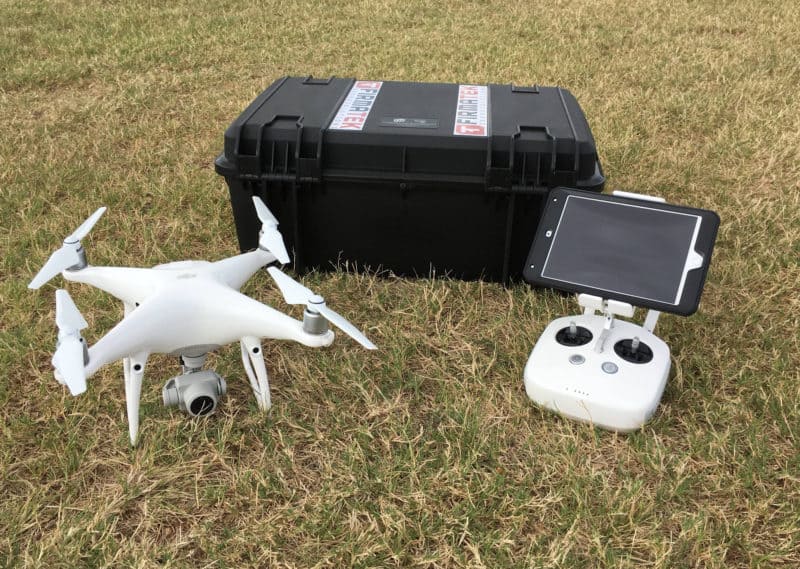With their capacity for data analysis and their resilience in the face of extreme conditions, drones have revolutionized how heavy industries map, analyze and clean up both their own worksites and environmental threats posed by radiation, runoff or toxic spills.
But drones don’t stop at cleaning up our messes. They also play a crucial role in the identification, analysis and mitigation of natural disasters, from avalanches and mudslides to flooding and wildfires.
In the heavy industries, we rely on this technology every day — and so do our colleagues in disaster response.
Mitigation: A Controlled Response to the Uncontrollable
“Mitigation” encompasses actions taken to reduce risk after a natural hazard or disaster or to eliminate long-term hazard risks, according to the Federal Emergency Management Association (FEMA). As Nicole Laframboise and Boileau Loko note in a 2012 paper for the International Monetary Fund (IMF), natural disasters can have a severe economic and financial impact, as well as permanently altering the landscape and ecosystems they impact.
While natural disasters cannot always be prevented, they can be addressed after the fact, and analysis of the conditions that trigger these disasters can reveal ways to improve safety and resilience in the face of them. Traditionally, surveying the scene of natural disasters has been done in person, sending in human teams to map and measure changes in the area. As the University of Michigan’s Department of Civil and Environmental Engineering (CEE) notes, however, this “boots on the ground” process “takes a significant amount of time, is potentially dangerous, and costs a lot to pursue.”
Drones and mapping technologies can alleviate all three of the CEE’s identified burdens. These technologies play a key role in analyzing potential disaster conditions, understanding the impact of a present disaster and restoring lives to normal after a disaster occurs.
First Responders: How Drones Can Respond to Human Needs In a Disaster
The first and most pressing need after a natural disaster is to rescue the stranded and treat the wounded — and as Caitria O’Neill and Morgan O’Neill have noted, the window for response is small. Throughout the centuries, humans have turned to additional resources to assist in these situations. In the Swiss Alps, St. Bernard dogs were trained to assist survivors after avalanches; in recent decades, Chinese cities have attempted to use satellites to locate survivors after earthquakes.
Now, China is employing drones to do what satellite systems once did. According to Wired’s Joshua Bateman, Chinese researchers have begun employing drones equipped with multiple types of sensors to scan disaster sites after an earthquake hits. The data helps rescue teams pinpoint survivors so they can rescue trapped individuals more efficiently.
In Malawi, drones boost cell phone and WiFi signals in hard-hit areas, and in Rwanda Silicon Valley startup Zipline employs drones to deliver blood supplies to hospitals in remote areas, according to Wired’s Jack Stewart.
As drone technology expands and develops, so do the uses to which drones can be put — and the attempts humans make to test the limits of the drones and their onboard tech.
A trial program in Queensland, Australia, recently began testing the maximum range for flying lifesaving drones. The drones are equipped with first aid, food and water packages to drop to people they find in a disaster area, as well as a loudspeaker the drone can use to broadcast messages to survivors.
In the past, the drones have been used to fly supplies to people whom rescuers can see, but whom they cannot reach safely. Now, the program, under the direction of project coordinator Carrie Hillier, is examining the possibilities of flying the drones safely outside the operator’s line of sight in order to increase their range and usefulness in low-visibility conditions, such as smoke from wildfires.
Robotics researcher Robin Murphy estimates that when robots are employed in disaster sites, the disaster may be mitigated and life returned to normal up to three years faster than if humans addressed the problem alone. Murphy’s work includes not only drones, but also ground- and water-based robots highly adapted to access particular sites.
Better Maps, Lower Risks: 3D Modeling of Disaster Sites
As drone technology improves, applications for its use expand. By combining drones with high-resolution cameras, researchers at the University of Michigan under the direction of Dimitrios Zekkos have begun using drones to create 3D maps of disaster sites, providing a clearer image of potential hazards and mitigation options without risking additional human lives onsite.
The drones use both still photography and video cameras and operate in a pattern with a great deal of overlap, which allows them to create detailed, measurable images of the disaster site. Back at base, researchers use the drones’ data and image sets to plan the best ways to initiate cleanup and assistance programs, and to build or rebuild infrastructure.
Some disaster sites are already putting 3D drone mapping technology to work. Humanitarian technology and innovation consultant Patrick Meier worked on a disaster recovery mission in Nepal that employed drones to map hard-hit areas.

Flying Into the Future: Next Steps for Drone Technologies
Although drones can greatly expedite disaster relief and provide extraordinarily detailed information to assist with conservation efforts, they have certain limitations. One of these is the fact that they can crash — and when they do so in an ecologically sensitive area, they may leave damage or debris that harms the very environment the drone was sent to protect.
Evolutionary biologist Linda Rothschild was so concerned about this problem that she put together a team to create a biodegradable drone for the 2014 International Genetically Engineered Machine competition. The drone used mycelium and proteins from paper wasps to create a body that will break down in a natural environment, not unlike a wasp nest.
Additionally, while the cost of drones has proven prohibitive in the past, lower-cost options are expanding opportunities for drone use, notes the Guardian’s James Norman. Conservation Drones founder Lian Pin Koh estimates that costs will soon drop far enough to make drones “a standard item in the toolbox” of conservation and disaster relief efforts.
Where will drones go in the future? The work of visionaries like Rodney Brooks focuses on creating robots that can not only venture into areas humans cannot reach and gather detailed data, but who can also think and reason about the data, analyzing and drawing conclusions from information in their environments.
Thinking drones may help us address common mistakes in managing disaster risk. As Thomas A. Lawson notes, all-too-human failings like denial, procrastination, or selective attention can hinder our efforts to effectively mitigate disasters or manage resources. Artificial intelligence that operates without these restrictions may help us maintain our focus and place our efforts where they can be most valuable in a disaster or conservation scenario.
Drones are already responding to disasters and improving our relationship with our planet. In disaster response and environmentalism, the day may come in which drones can not only tell us where to find survivors or endangered species, but also take their own steps to protect the lives they encounter.
Images by: nordroden/©123RF Stock Photo, artpilot/©123RF Stock Photo, pixelsaway/©123RF Stock Photo


